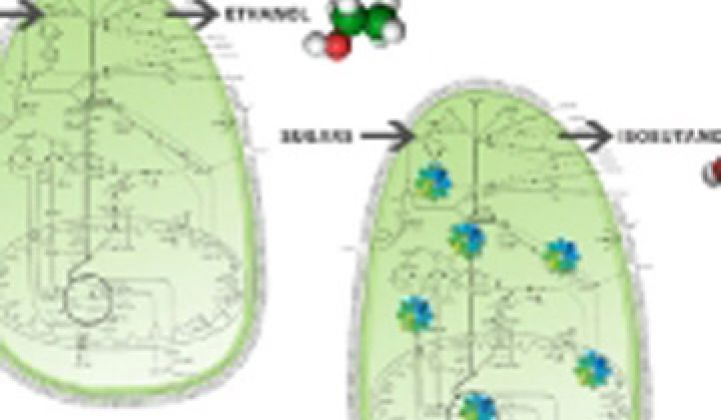There’s a good chance you’ve paid quite a bit of money to drink isobutanol.
“One of the flavor notes of scotch is isobutanol,” says Patrick Gruber, CEO of Gevo, adding that the naturally occurring chemical accounts for a good portion of the difference in taste between scotch and bourbon.
While Gevo is not in the liquor business, the company is betting that bio-based isobutanol will become a mainstay in the biochemistry/biofuel market, in part because of the inherent chemical advantages the substance has over ethanol.
Simply put, isobutanol -- which can be produced out of corn starch, cellulosic materials, agricultural residues and other ethanol feedstocks -- is an alcohol that acts like a hydrocarbon. The four-carbon molecule can be shipped in existing pipelines and blended with a variety of fossil fuel-based materials to produce greener versions of jet fuel, rubber, polyethylene or diesel.
Gevo has developed a genetically modified yeast that eats those feedstocks and secretes isobutanol. Currently, isobutanol comes from fossil fuels.
By contrast, ethanol is a soluble alcohol, one of the typical yeast byproducts. It corrodes pipelines, absorbs water and can only be used in certain applications like transportation fuel. Arguably worst of all, it has a lower energy density. A gallon of ethanol only contains around 67 percent of the energy of a gallon of gas. Biobutanol contains 82 percent, according to Gevo.
Meanwhile, the similarities between isobutanol and ethanol give Gevo an edge over some other bio-hydrocarbon makers. Because Gevo starts with a yeast, fermentation and similar feedstocks, the company can employ mothballed equipment and even entire ethanol distilleries as a foundation for its own factories. It will cost about 45 cents a gallon to retrofit a 100-million-gallon-a-year ethanol plant to produce Gevo’s isobutanol, says the company.
Whether or not the firm can pull this off remains to be seen. But at least Gevo is off the drawing board. The company, which held a successful IPO early this year, already has a facility in Colorado that produces a million gallons of fluids each year. It breaks ground this week on an 18-million-gallon-a-year facility in Luverne, Minnesota that can be expanded to 40 million gallons a year. Isobutanol will start to come out of the Luverne facility in 2012.
Joint ventures with established manufacturers will follow. Gruber, like other execs at Gevo, came from Cargill.
“We want to have 350 million gallons of capacity by 2015,” he added.
Lanxess, a large rubber producer and Gevo investor, recently showed off a rubber ball produced from an isobutene derived from Gevo’s chemicals.
Gevo isn’t alone: Amyris has produced a yeast that eats sugar and secretes hydrocarbons, but its bug generates a 15-carbon molecule called biofene. Amyris recently announced it can produce around 4 million gallons a year (17 million liters) of its specialty chemical cocktail. Gevo also faces a nasty lawsuit with Butamax Advanced Biofuels, a joint venture from BP and DuPont, that has nothing to do with top-quality home entertainment systems from the '80s. (Side note: Solazyme also employs sugar, fermentation and GMOs to produce algae oils. Go, team fermentation!)
Conventional oil prices are an omnipresent threat to biofuels, but Gruber notes that trends favor Gevo and others. When oil sells for $60 a barrel, starch-based biofuel companies can compete in the $10 billion specialty chemical markets if starches sell for $245 a metric ton. At $90 a barrel, starch can rise to $267 a ton and the potential market expands to $40 billion. With oil at $135 a barrel, starch can rise to $289 a metric ton and starch-based, yeast-made fuels can compete virtually anywhere in the $3 trillion fossil fuels market.
“Oil [prices] will rise faster than carbohydrates over time,” he said.



